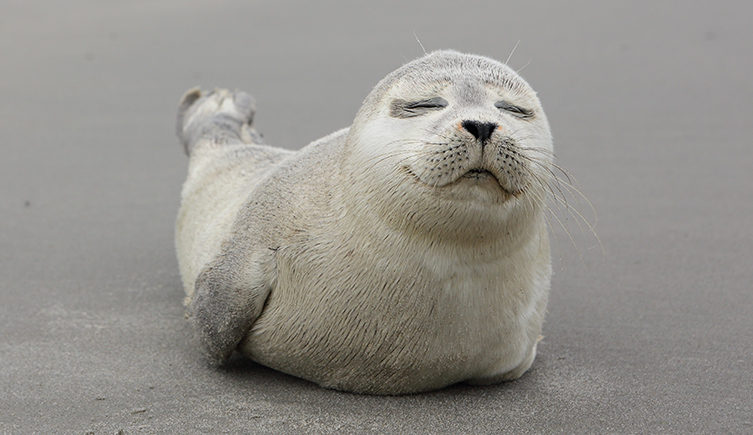Project highlights
- Join an interdisciplinary team for a multi-angle investigation on the evolution of secondary aquatic vertebrates.
- Learn cutting-edge techniques and develop quantitative skills which are highly transferable across disciplines.
- Explore the relevance of paleobiology to modern day biodiversity.
Overview
The transition from water to land around 400 million years ago was a key event in vertebrate evolutionary history, giving rise to a vast range of terrestrial tetrapods.
Despite this evolutionary success, since then all major groups of tetrapods have had members return to life in water. This has filled the fossil record with a range of independent aquatic invasions by tetrapods and produced many important players in today’s aquatic ecosystems.
Compared to the initial conquest of land, the secondary transitions into aquatic living are poorly understood but they offer an exceptional opportunity for understanding the evolution of morphology and functional convergence.
A fundamental understanding of how their diversity originated and changed through past environmental changes provides useful insights for conserving the diversity of today’s aquatic tetrapods, many of which are already at risk of extinction.
Here, we propose a project to uncover the drivers and mechanisms involved in transitions from terrestrial to aquatic lifestyles by reconstructing the taxonomic, morphological and functional diversity of these lineages as well as their paleoenvironments. Specifically, this project will focus on a clade of secondary aquatic vertebrates per the PhD researcher’s interest and investigate their environmental drivers, morphological evolution and functional performance and diversity.
Methodology
This project will take an interdisciplinary approach, combining a variety of research methods including ecological and evolutionary modelling, digital visualization and reconstruction techniques, geometric morphometric analysis, and biomechanical simulations.
1. Habitat preferences, living environmental conditions, and their influence on the diversification dynamics will be reconstructed using fossil occurrences and environmental data from the literature and online databases.
2. Digital models of the skeletal elements (e.g. vertebrae, limb bones, etc.) will be built from museum specimens using computed tomography (CT) scanning and photogrammetry. Musculature will be reconstructed using modern relatives for model training and validation. Morphological diversity among taxa will be quantified using 3D geometric morphometric analysis.
3. Reconstructed 3D models incorporating soft-tissues will be used to model the range of motion. Finite element analyses (FEA) of the skeletal elements will be used to simulate and compare the functional performance in relation to ecological properties such as diet and locomotor type.
Training and skills
DRs will be awarded CENTA Training Credits (CTCs) for participation in CENTA-provided and ‘free choice’ external training. One CTC can be earned per 3 hours training, and DRs must accrue 100 CTCs across the three and a half years of their PhD.
The PhD researcher will gain a variety of experience and trainings in palaeobiology research and data science, including opportunities for research visits to some of the world’s largest natural history museums. Working closely with a multi-disciplinary supervisory team, they will develop various skills highly transferable across academia and industry, including database development, data query, and statistical modelling (R, MatLab), and specialized techniques such as specimen digitisation using photogrammetry and computed tomography, reconstructing hard- and soft-tissue anatomy, biomechanical analysis and macroevolutionary analyses. Trainings also include scientific writing and presenting at conferences. Existing experience in any of these skills is advantageous.
Partners and collaboration
Dr. Natalie Cooper at the NHM will serve as the co-supervisor for the DR, contributing to the overall project development and host research visits during the project. Dr. Cooper has extensive experience in evolutionary research, including the macroevolution of morphology using geometric morphometrics of 3d images and the evolution of narine vertebrates using data on both fossil and living taxa. Her team has recently curated the marine mammal data in the Paleobiology Database and she will arrange access to the NHM library resources for compiling further data from the literature.
Further reading
Gutarra, S., Moon, B.C., Rahman, I.A., Palmer, C., Lautenschlager, S., Brimacombe, A.J. and Benton, M.J., 2019. Effects of body plan evolution on the hydrodynamic drag and energy requirements of swimming in ichthyosaurs. Proceedings of the Royal Society B, 286(1898), p.20182786.
Gutarra, S. and Rahman, I.A., 2022. The locomotion of extinct secondarily aquatic tetrapods. Biological Reviews, 97(1), pp.67-98.
Houssaye, A., 2013. Bone histology of aquatic reptiles: what does it tell us about secondary adaptation to an aquatic life?. Biological Journal of the Linnean Society, 108(1), pp.3-21.
Thewissen, J.H. and Nummela, S. eds., 2008. Sensory evolution on the threshold: adaptations in secondarily aquatic vertebrates. Univ of California Press.
Thewissen, J.G.M., Cooper, L.N., George, J.C. and Bajpai, S., 2009. From land to water: the origin of whales, dolphins, and porpoises. Evolution: Education and Outreach, 2, pp.272-288.

.png)